Slideshow: Anatomy of a Collins Box Bag
Learn the basic parts of the bag that made Enid a fashion legend. (Hover over image for description.)
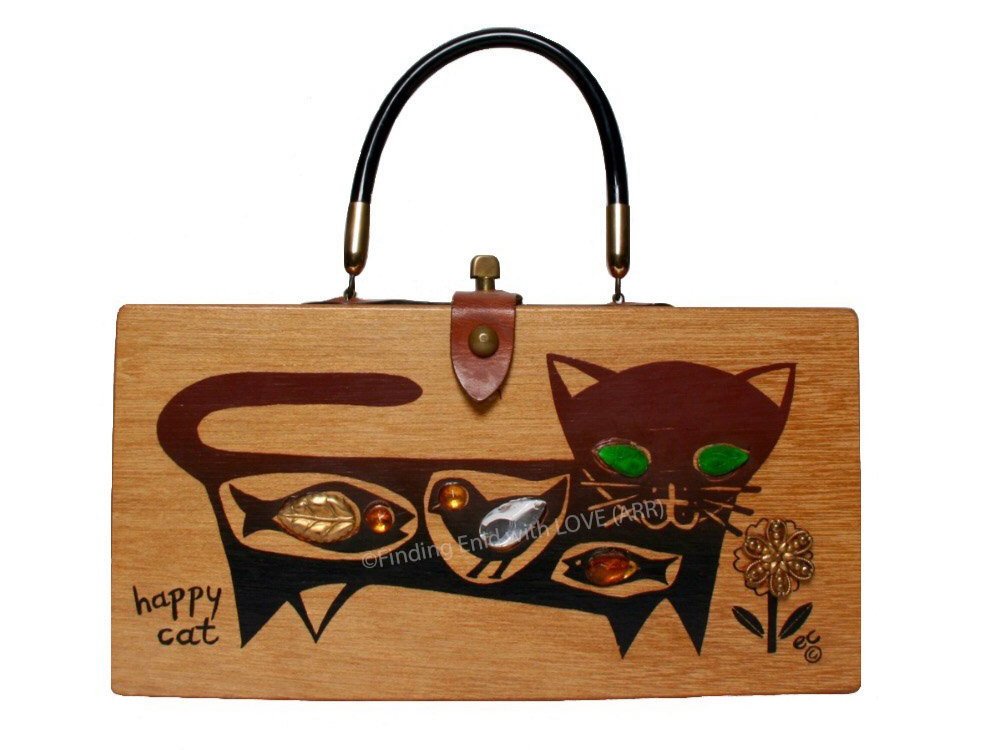
The mid-century Collins of Texas box bag was made of solid wood with hand-wrought brass, hand-stained leather trim and a rigid vinyl handle. Designs were at first hand painted onto the fronts and/or tops, but later screenprinted. Jewels were glued on by hand.
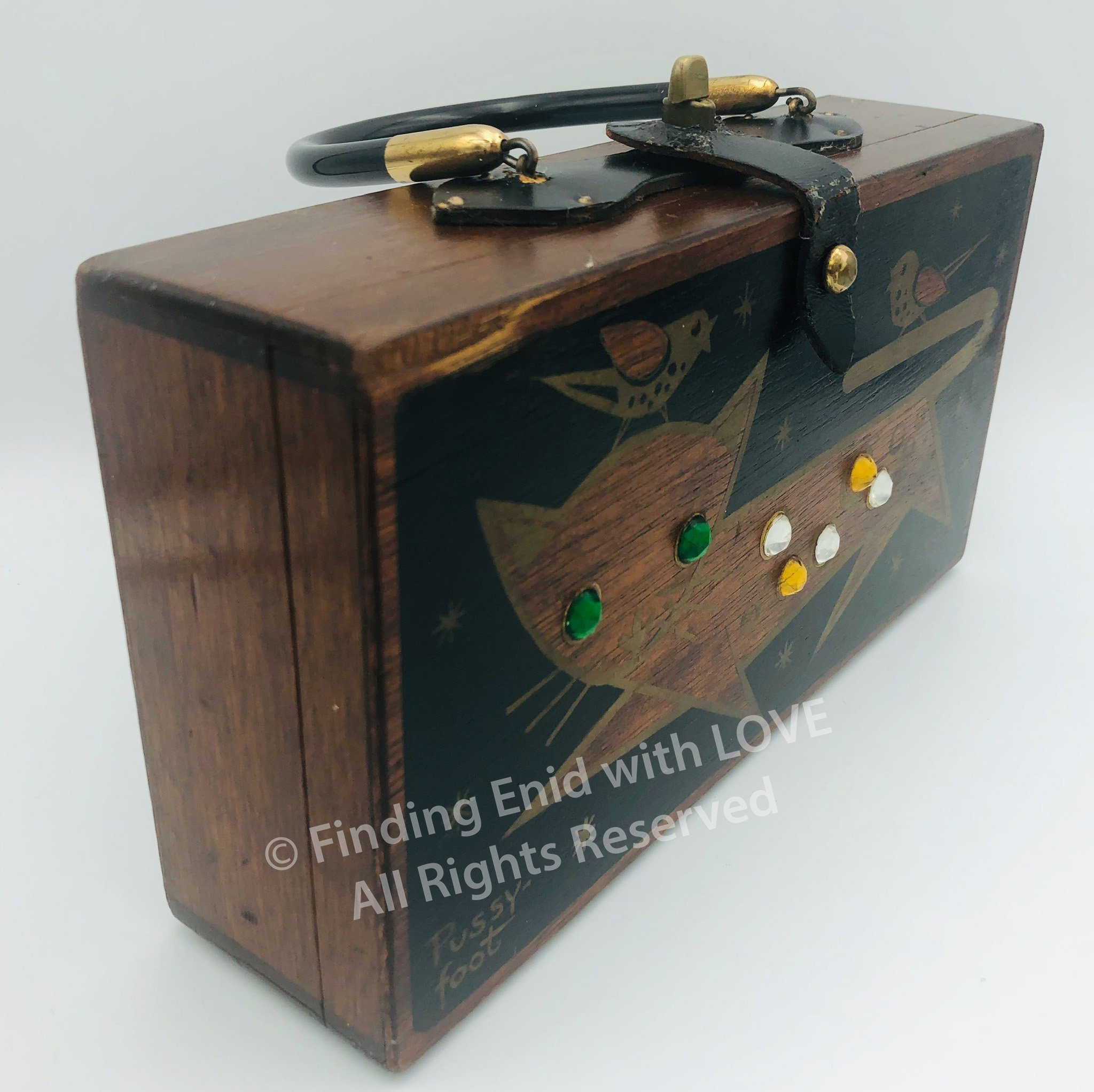
Several box shapes were made: square (2 sizes), rectangular Classic Collinsiana (8 x 4 in. mini, 11 x 6 in. medium, 11 x 8 in. large), and several top-opening casket styles. This example is a 11 x 5 in. “Classic Collinsiana (code: HH), perhaps most popular and recognizable of Collins box purses.
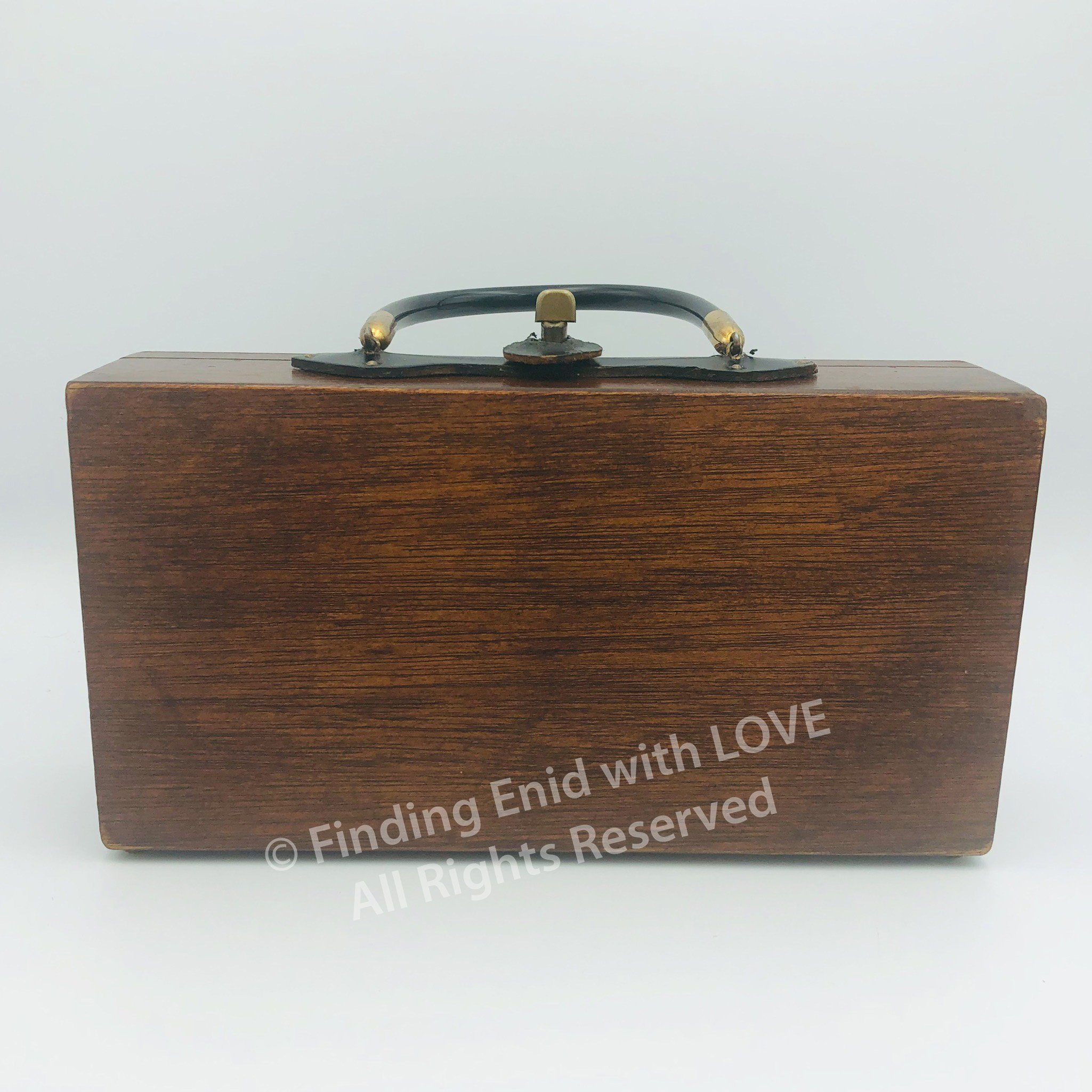
Frederic Collins sourced the fine exotic woods used to make the bags, including mahogany and California redwood. Early boxes featured dovetail construction. Finishes included dark walnut, antique white, and natural.
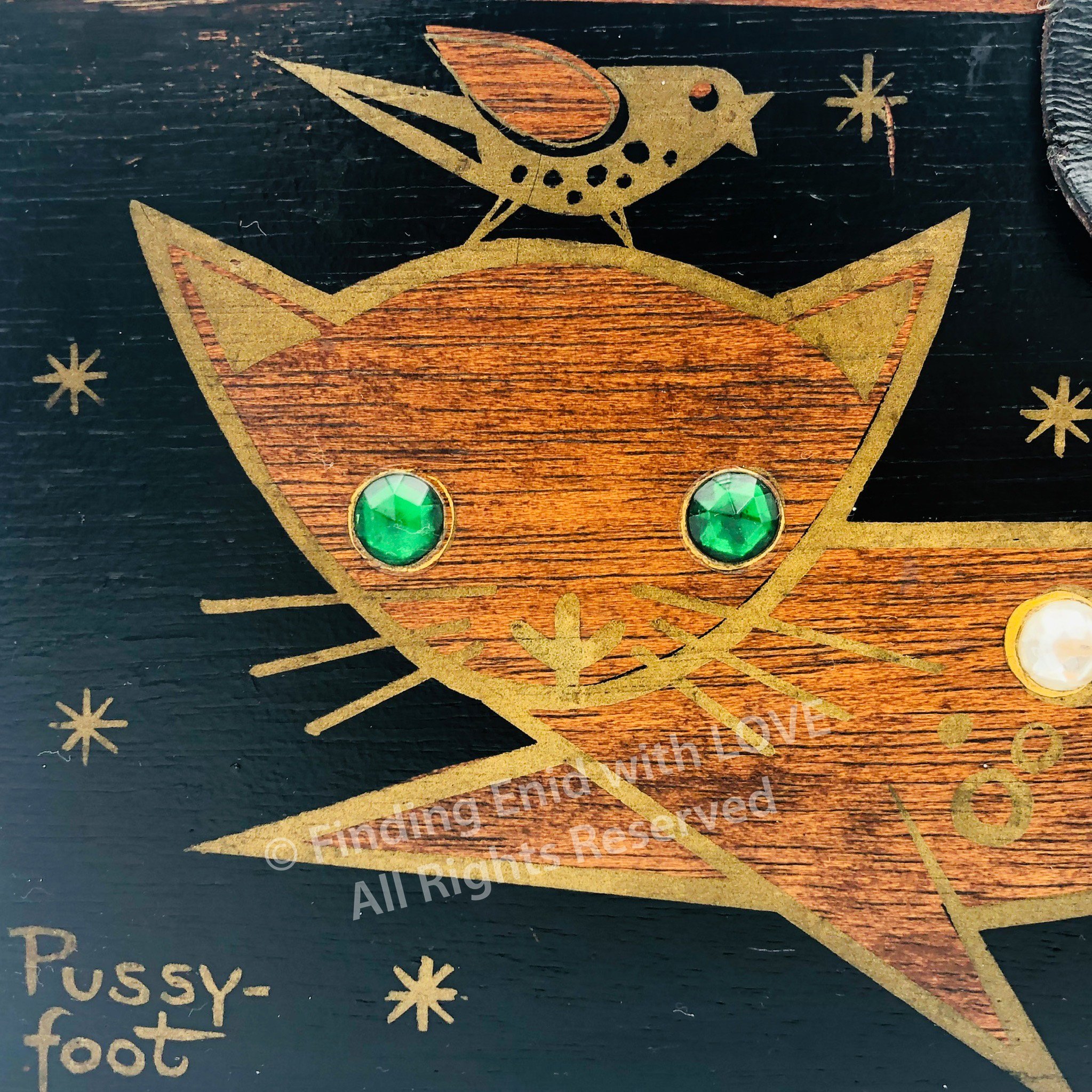
After finishing and staining, the artwork is applied. At first, this was painted by hand but later screenprinted. Enid’s artwork often limits colors to one or two, or a gradation. The title of the work usually (but not always) appears in the lower left corner of the bag front.
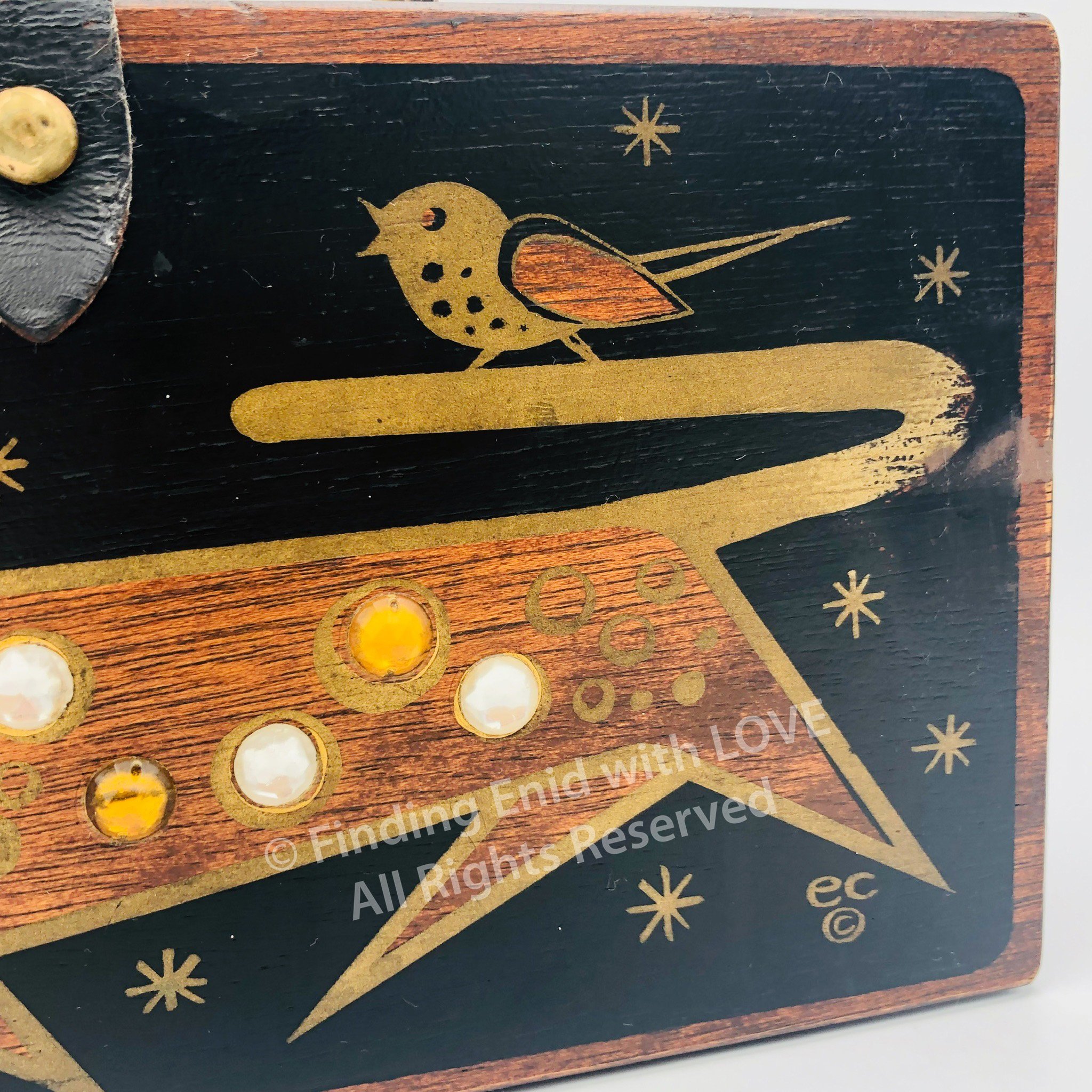
After screenprinting and finishing, the jewel pattern — a schematic for which of how many jewels and embellishments went where — was done. This is where Enid’s designs become incredibly prolific and complex, as gem variables included color, shape, size, cut, material, and quantity.
Only works designed by Enid Collins bear the “ec” signature mark, typically in the lower right corner of the bag front but sometimes missing. The US Copyright registration mark was added to the signature after Collins of Texas began filing in 1961. Additional copyright information is often found inside the bag (see last slide).
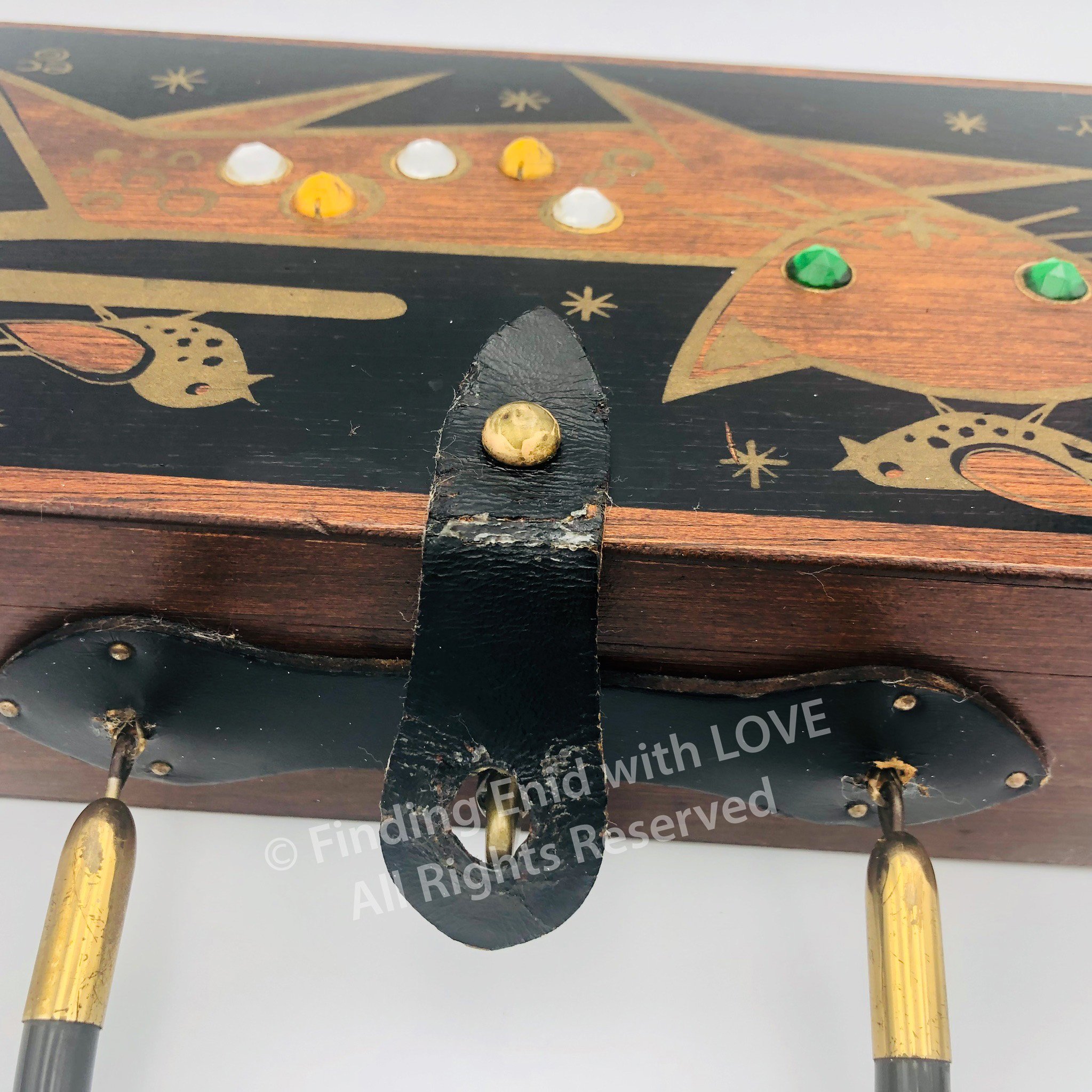
Handles were most often rigid vinyl or leather, though Enid also experimented with materials such as painted vinyl and lucite. Leather trim and enclosures were produced in several shades including black, white bone, antique tan, chestnut brown and red. Solid brass clasps and brass handle end caps.

Early bags used two small exterior hinges as connectors, and featured four solid brass round feet. Later, a long exterior hinge was used, with just two small feet. Some designs also use an interior hinge.
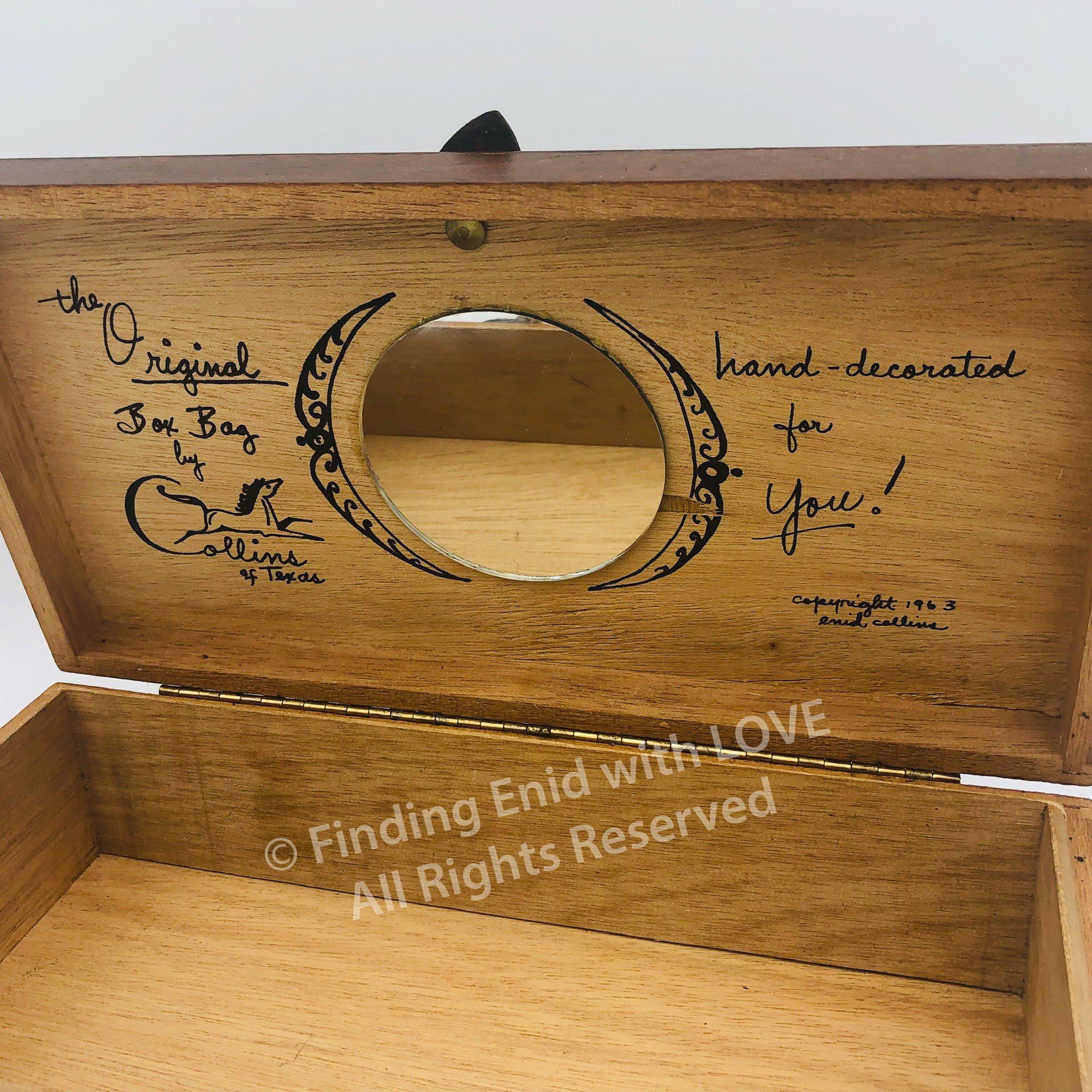
Inside the Collins box bag, you’ll find a mirror (round or rectangular), signature and copyright variants, and sometimes additional artwork, such as in this example.
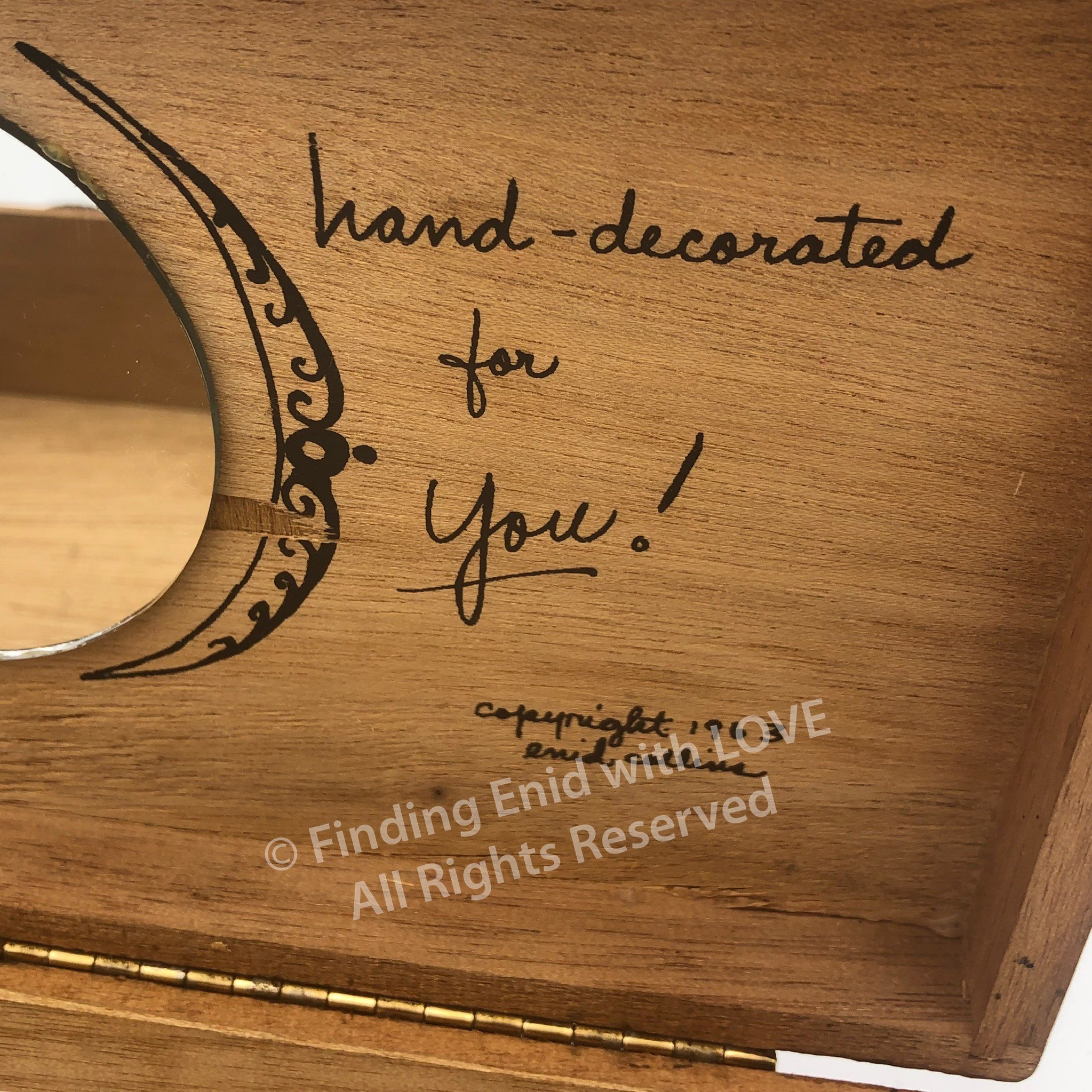
Enid’s copyright marks vary widely but are often found inside the cover of the box bag. Some include a year of production and/or registration with the U.S. Copyright office, which the company did not begin to do until 1961 (see Laura Seargeant Richardson’s collectingcollins.com for an exhaustive timeline of all 766 registered designs).









